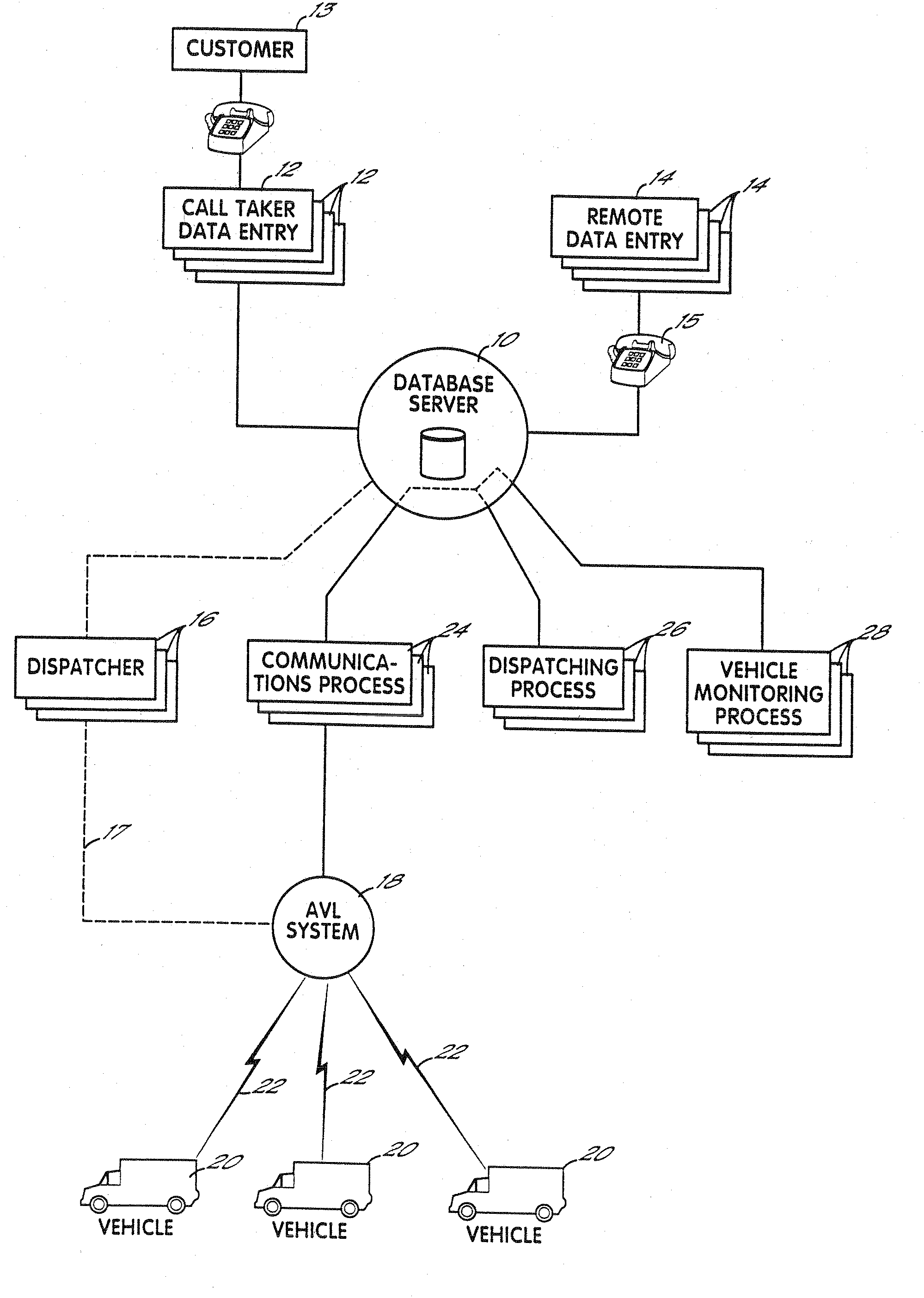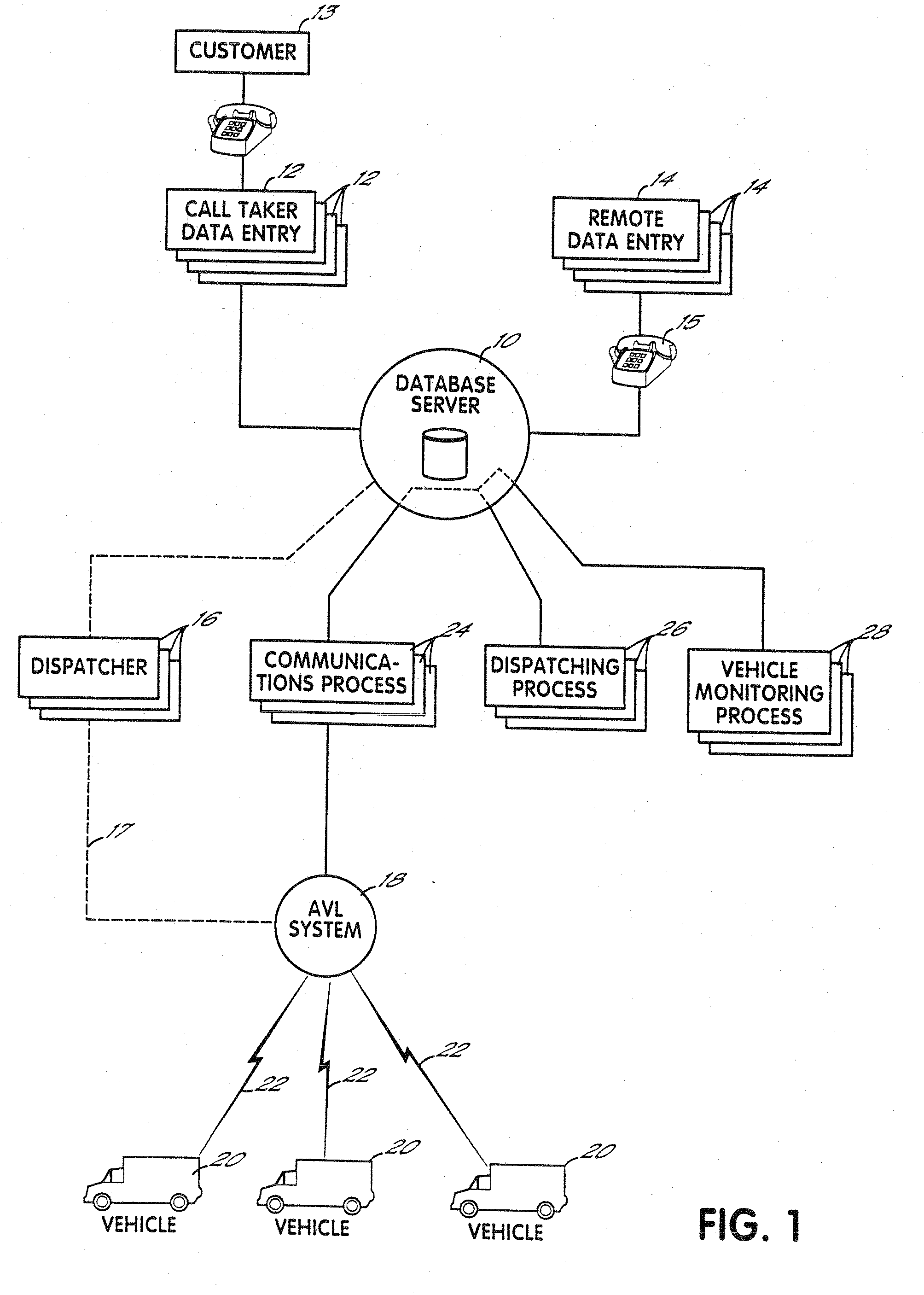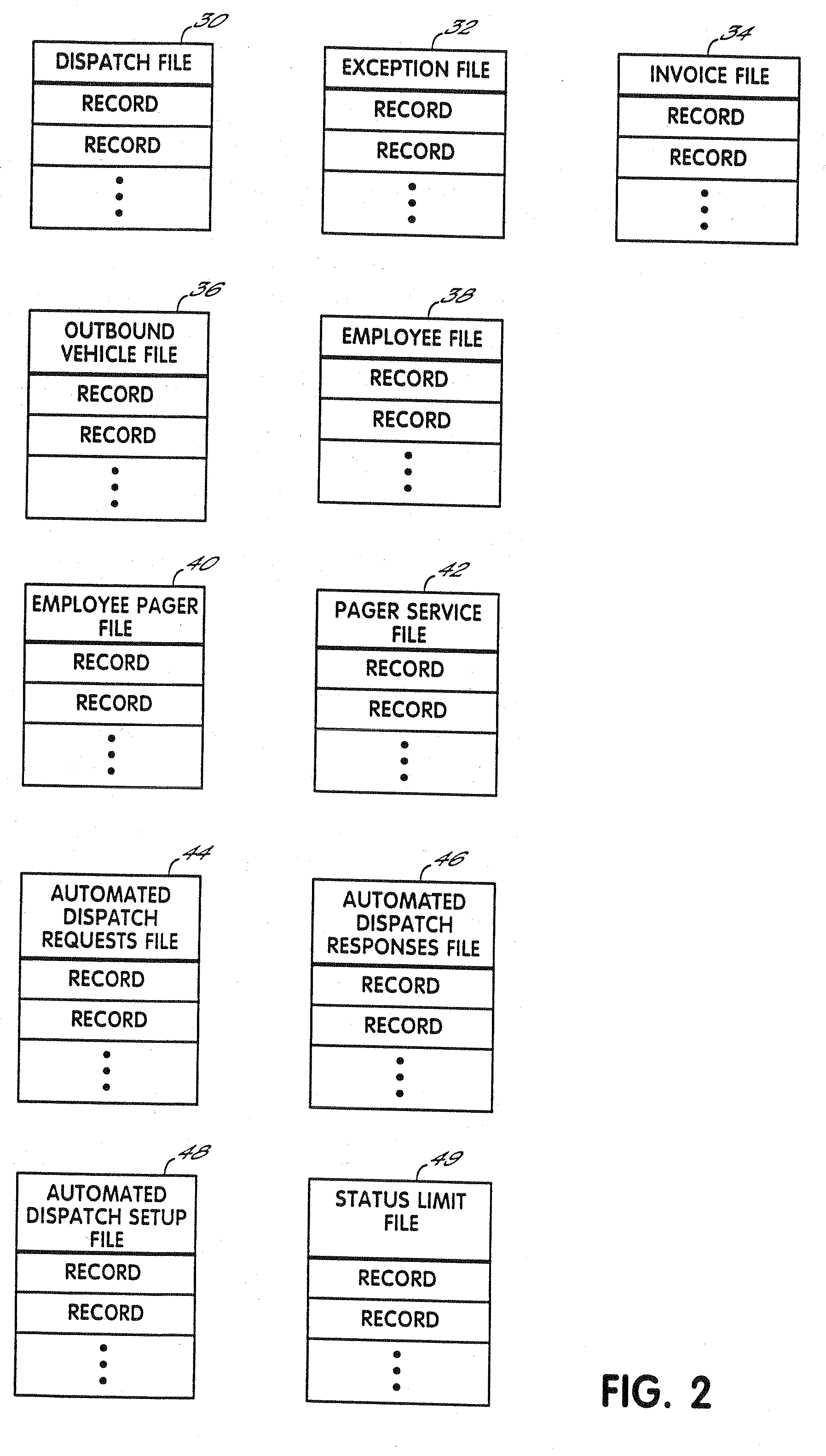Fully Automated Vehicle Dispatching, Monitoring and Billing
a fully automated, vehicle technology, applied in the field of taxi dispatching or controlling taxis, ambulances, can solve the problems of most automated dispatching systems, vehicle arriving late, or not at all, and reducing the awareness of mileage charges, so as to reduce future delays and increase awareness of mileage charges
- Summary
- Abstract
- Description
- Claims
- Application Information
AI Technical Summary
Benefits of technology
Problems solved by technology
Method used
Image
Examples
Embodiment Construction
[0032]Referring to FIG. 1, a fully automated vehicle dispatching, monitoring and billing system in accordance with the principles of the present invention, includes several elements for automated dispatching and monitoring which have been discussed above in the background of this application. Specifically, the system includes a database server 10 for storing records indicating requested vehicle services and associated information. This database is created initially at one of two data entry sites 12, 14. Call takers 12 located at the dispatching facility (multiple call takers being illustrated in FIG. 1) receive telephone requests from customers such as customer 13 and, in response, generate request records in the database in several tests. Contract customers 14 may also possess remote data entry terminals at which the customers may enter data into database server 10 over a telephone connection 15.
[0033]Incoming requests may also be accepted by various other methods; for example, rem...
PUM
 Login to View More
Login to View More Abstract
Description
Claims
Application Information
 Login to View More
Login to View More - R&D
- Intellectual Property
- Life Sciences
- Materials
- Tech Scout
- Unparalleled Data Quality
- Higher Quality Content
- 60% Fewer Hallucinations
Browse by: Latest US Patents, China's latest patents, Technical Efficacy Thesaurus, Application Domain, Technology Topic, Popular Technical Reports.
© 2025 PatSnap. All rights reserved.Legal|Privacy policy|Modern Slavery Act Transparency Statement|Sitemap|About US| Contact US: help@patsnap.com



